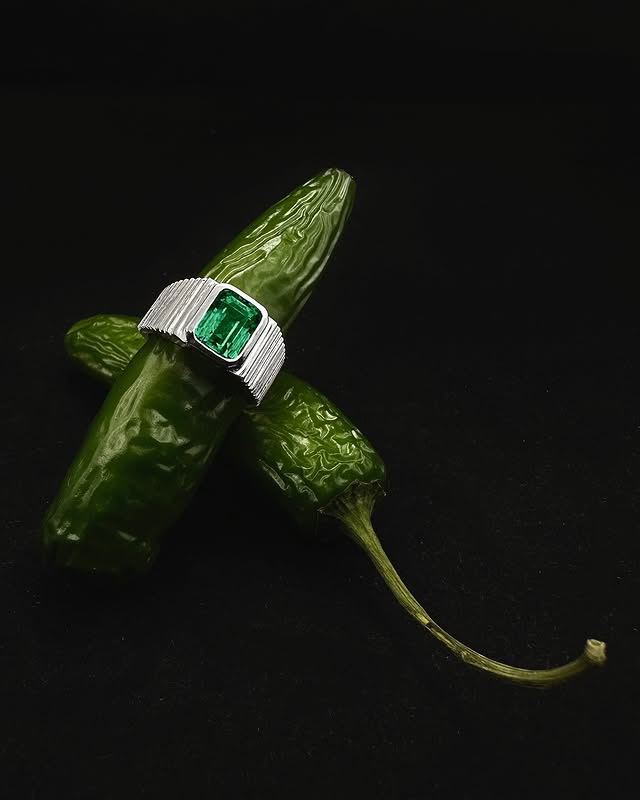WHEN LUXURY LOST ITS LUSTER
Share
Since its inception, the luxury fashion industry has been historically and culturally capitalized by the Old World. A story written from Paris, with names that have become legends, enchanting generations and the entire world to draw them into businesses that retain little from those grand legends beyond their names.
After just over two decades of the luxury fashion industry going global, 2024 became the year when mass luxury (a term coined for the products and brands of mega-conglomerates that, at this point, seem to sell extremely expensive merch) began its decline.
The groups behind titans like Louis Vuitton, Dior, Balenciaga, and Gucci couldn’t avoid stumbles amid shifting consumer tastes and a turbulent economic and social environment.
Is the luxury we know finally losing its luster?
For Kering, Gucci’s revenue fell 26% during its third financial quarter, dropping to €1.6 billion for the period, while Yves Saint Laurent’s revenue dipped 13% to €670 million, and Bottega Veneta’s revenue rose just 4% to €397 million.
Revenue from the company’s other houses—including Balenciaga, Alexander McQueen, Brioni, and its jewelry division—fell 15% collectively to €686 million.
For LVMH, while 2023 saw its revenue grow 14% to $93.4 billion (€86.2 billion), its quarterly earnings slowed month by month, with 3% growth in the first three months of 2024 and a mere 1% growth in its second quarter. By its third quarter, the Fashion and Leather Goods segment—the golden goose of the company, accounting for nearly half of the group’s revenue—saw a 5% decline.
Even totems considered the epitome of luxury, like the Birkin bag (through a viral Walmart dupe), couldn’t escape scrutiny over their real value. Consumers are now questioning how much of their perception is shaped by marketing and branding versus genuine craftsmanship, manual labor, and creative work—a notion closer to true luxury.
What happens when the industry’s foundations tremble?
An opportunity for reconfiguration. And an opportunity for Latin America and its creatives to define luxury on their own terms.
These elements—manual excellence, artisanal dedication, and creative innovation—lie at the heart of what we traditionally think of as luxury. And they are the same elements palpable in the work of a new generation of creatives in the region.
Luxury with new roots?: Latin America as the new epicenter of desire.
The shake-up facing the global luxury industry isn’t just a numbers game—it’s an existential challenge. What is luxury when historic houses lose their sheen? For Latin America, this isn’t a crisis; it’s an invitation.
The concept of luxury, long monopolized by European capitals, has shown cracks that leave room for new narratives. In a world where product production and promotion have accelerated, where endless trends are algorithmically manufactured daily, the inevitable outcome is one where consumers begin to value authenticity over exclusivity and cultural connection over mere ostentation. Latin America has all the ingredients to offer a renewed, visceral, and deeply human version of what luxury means.
In this region, luxury isn’t measured solely by the zeros on a price tag, but by stories woven by hands that understand materials not as resources, but as a language. Designers like Silvia Tcherassi, Julia y Renata, and Jonathan Cohen are already charting an alternative map, where local craftsmanship and cultural roots not only enrich their collections but redefine the global standard.
Latin America offers something the major luxury houses seem to have lost: soul. While European brands struggle to justify astronomical prices with marketing strategies that ring increasingly hollow, our region offers a tangible connection between product and creator.
Latin American luxury isn’t obsessed with crafting an aura of inaccessibility; on the contrary, it seeks to be understood, valued, and shared. It is a luxury that acknowledges the past, lives in the present, and bets on a future that is sustainable—both culturally and environmentally.
Change as an Opportunity for Reinvention
The decline of mass luxury is no accident. We live in an era where consumers question authenticity, demand transparency, and want more than products—they want values. This is where Latin America can shine. Our creatives aren’t just making fashion; they’re rewriting the meaning of the word “desire.”
In Mexico, brands like Yakampot have revalued traditional attire by placing it in a contemporary context without diluting its essence. In Colombia, Johanna Ortiz has elevated artisanal work to a global pedestal, proving ancestral techniques can be as relevant as the most innovative ones.
But it’s not just fashion. In jewelry, labels like TANE in Mexico or Kuntur in Peru work with indigenous materials and inherited techniques that celebrate the richness of their origins.
Each piece tells a story that transcends the object itself, turning ownership into an act of connection.
Is the future of luxury in LatAm?
As European luxury wobbles, Latin America’s opportunity isn’t merely to fill the void but to rewrite the rules. To define what luxury means in the 21st century through our own narratives, values, and experiences.
The world is ready to listen, and we, as a region, are ready to speak—not through imitation, but through authenticity. Because luxury isn’t in the names engraved on a label, but in the hands that create, the dreams they inspire, and the connection that reminds us every object can be a living work of art.
Perhaps it’s time to stop looking to Paris and start looking to Medellín, Cusco, Oaxaca… Because there, in what was once considered peripheral, lies the new epicenter of desire.












